Mahdi Eskandari
Spectral Efficiency Maximization for Active RIS-aided Cell-Free Massive MIMO Systems with Imperfect CSI
Feb 11, 2024



Abstract:A cell-free network merged with active reconfigurable reflecting surfaces (RIS) is investigated in this paper. Based on the imperfect channel state information (CSI), the aggregated channel from the user to the access point (AP) is initially estimated using the linear minimum mean square error (LMMSE) technique. The central processing unit (CPU) then detects uplink data from individual users through the utilization of the maximum ratio combining (MRC) approach, relying on the estimated channel. Then, a closed-form expression for uplink spectral efficiency (SE) is derived which demonstrates its reliance on statistical CSI (S-CSI) alone. The amplitude gain of each active RIS element is derived in a closed-form expression as a function of the number of active RIS elements, the number of users, and the size of each reflecting element. A soft actor-critic (SAC) algorithm is utilized to design the phase shift of the active RIS to maximize the uplink SE. Simulation results emphasize the robustness of the proposed SAC algorithm, showcasing its effectiveness in cell-free networks under the influence of imperfect CSI.
Multi-fidelity Bayesian Optimisation of Syngas Fermentation Simulators
Nov 06, 2023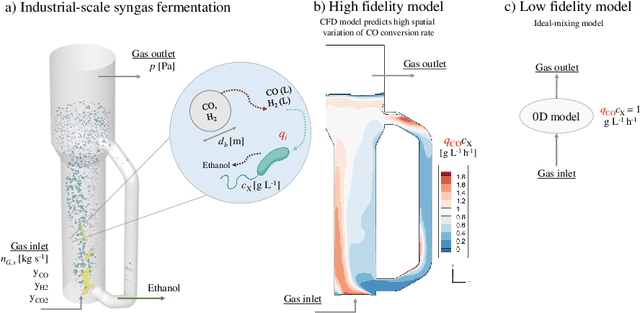
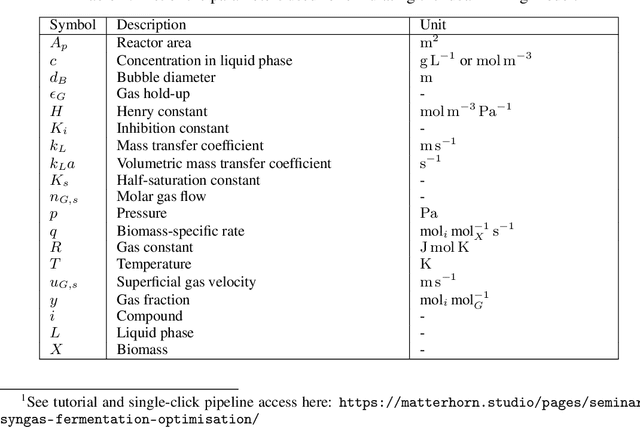
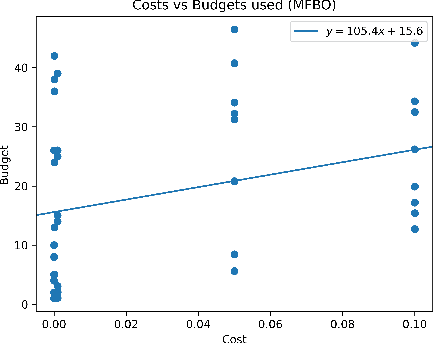
Abstract:A Bayesian optimization approach for maximizing the gas conversion rate in an industrial-scale bioreactor for syngas fermentation is presented. We have access to a high-fidelity, computational fluid dynamic (CFD) reactor model and a low-fidelity ideal-mixing-based reactor model. The goal is to maximize the gas conversion rate, with respect to the input variables (e.g., pressure, biomass concentration, gas flow rate). Due to the high cost of the CFD reactor model, a multi-fidelity Bayesian optimization algorithm is adopted to solve the optimization problem using both high and low fidelities. We first describe the problem in the context of syngas fermentation followed by our approach to solving simulator optimization using multiple fidelities. We discuss concerns regarding significant differences in fidelity cost and their impact on fidelity sampling and conclude with a discussion on the integration of real-world fermentation data.
Statistical CSI-based Beamforming for RIS-Aided Multiuser MISO Systems using Deep Reinforcement Learning
Sep 03, 2022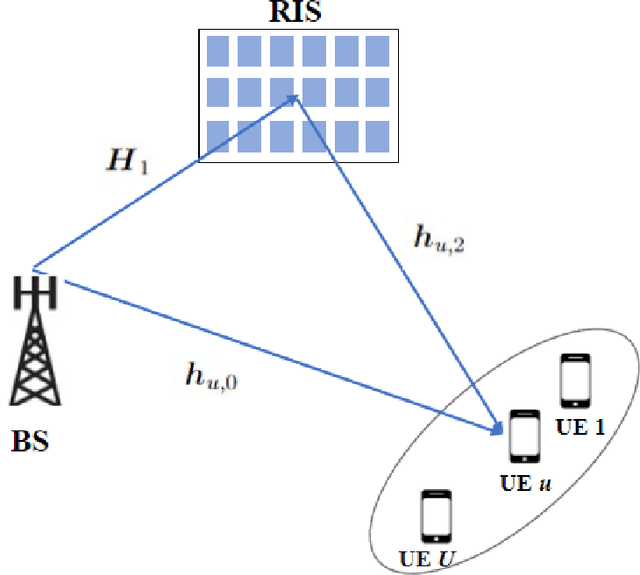
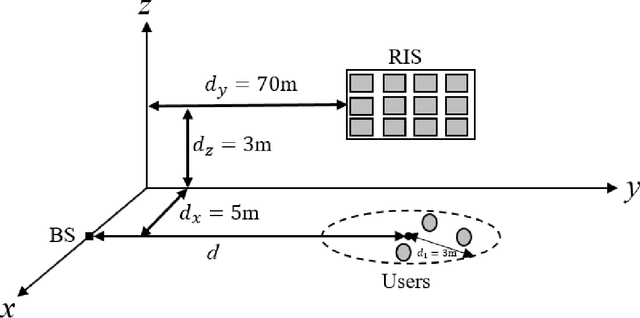
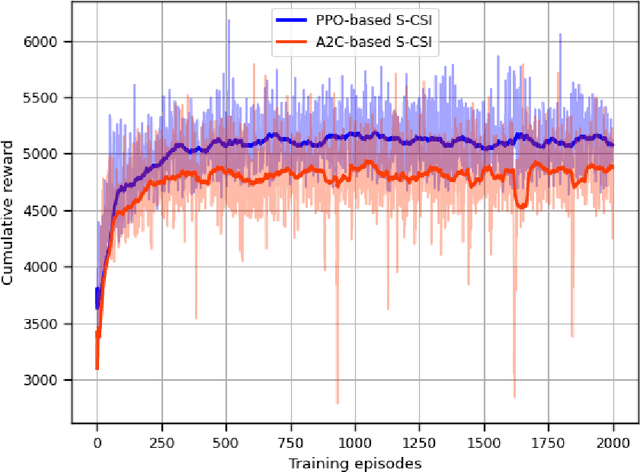
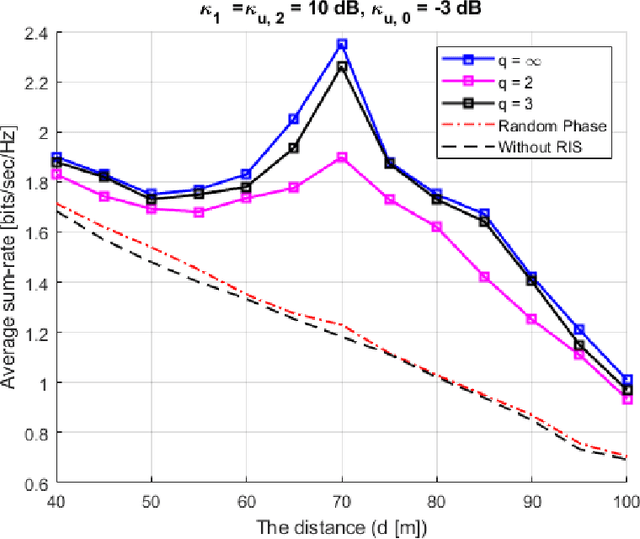
Abstract:The paper presents a joint beamforming algorithm using statistical channel state information (S-CSI) for reconfigurable intelligent surfaces (RIS) for multiuser MISO wireless communications. We used S-CSI, which is a long-term average of the cascaded channel as opposed to instantaneous CSI utilized in most existing works. Through this method, the overhead of channel estimation is dramatically reduced. We propose a proximal policy optimization (PPO) algorithm which is a well-known actor-critic based reinforcement learning (RL) algorithm to solve the optimization problem. To test the efficacy of this algorithm, simulation results are presented along with evaluations of key system parameters, including the Rician factor and RIS location, on the achievable sum rate of the users.
Smart Interference Management xApp using Deep Reinforcement Learning
Apr 12, 2022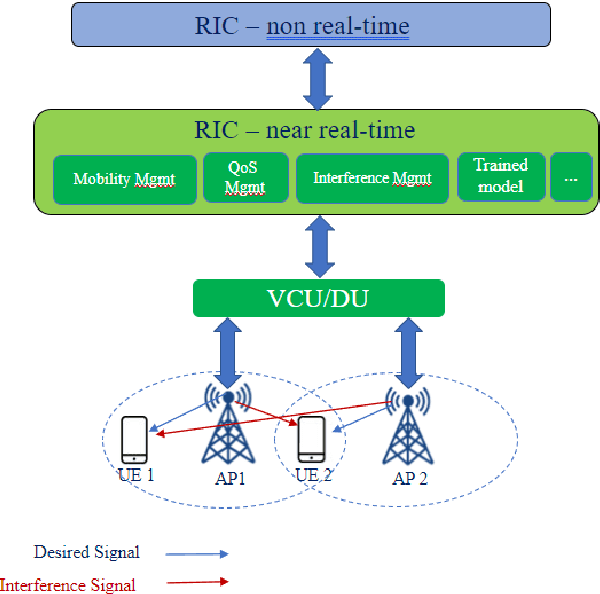
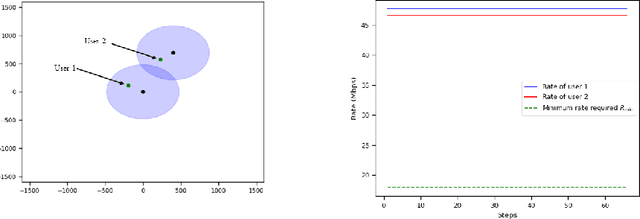
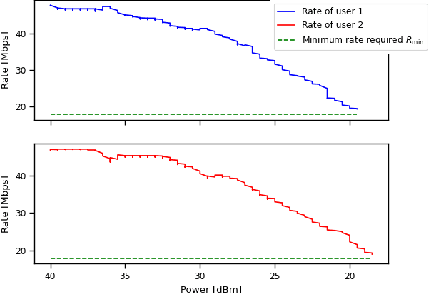

Abstract:Interference continues to be a key limiting factor in cellular radio access network (RAN) deployments. Effective, data-driven, self-adapting radio resource management (RRM) solutions are essential for tackling interference, and thus achieving the desired performance levels particularly at the cell-edge. In future network architecture, RAN intelligent controller (RIC) running with near-real-time applications, called xApps, is considered as a potential component to enable RRM. In this paper, based on deep reinforcement learning (RL) xApp, a joint sub-band masking and power management is proposed for smart interference management. The sub-band resource masking problem is formulated as a Markov Decision Process (MDP) that can be solved employing deep RL to approximate the policy functions as well as to avoid extremely high computational and storage costs of conventional tabular-based approaches. The developed xApp is scalable in both storage and computation. Simulation results demonstrate advantages of the proposed approach over decentralized baselines in terms of the trade-off between cell-centre and cell-edge user rates, energy efficiency and computational efficiency.
 Add to Chrome
Add to Chrome Add to Firefox
Add to Firefox Add to Edge
Add to Edge